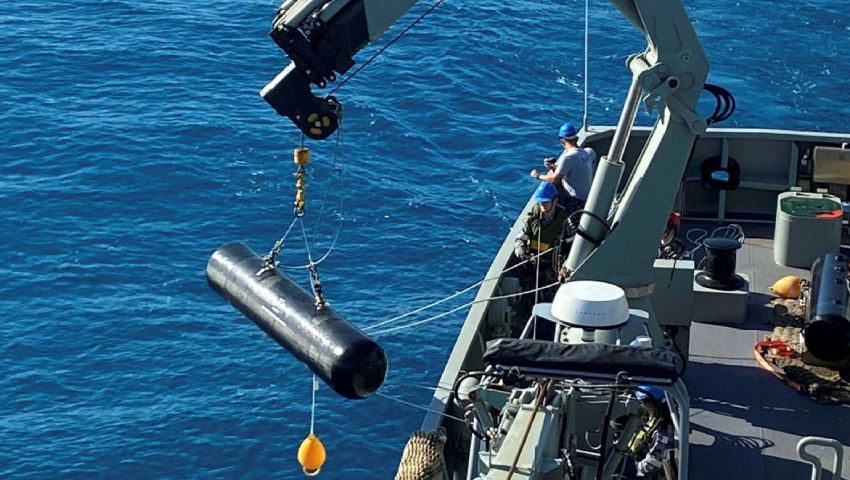Personnel from the Royal Australian Navy’s hydrographic survey ship HMAS Melville, laid two inert minefields as part of Exercise Talisman Sabre 21 (TS21).
Melville’s core capability is military survey and geospatial intelligence gathering. This is the first time the ship and the hydrographic sailors have been tasked on mine-laying operations.
According to Lieutenant Commander Adrian Eddy, Executive Officer Melville, laying mines required innovation and adaptability from the crew, who were learning the intricacies of mine-laying operations for the first time.
“Leeuwin Class hydrographic ships have never conducted mine-laying before, so effectively executing this tasking moves us closer to the development of underwater mastery,” LCDR Eddy said.
Laying of the minefields involved craning eight inert or ‘dummy’ mines of varying shapes, sizes and weights in the exercise area off the coast of Townsville.
The dummy mines don’t contain any explosive components but are designed to look, feel and move like the real thing to pose a realistic challenge to detection.
The ship’s company appreciated the varied warfare roles the ship conducted throughout TS21.
Lieutenant David Picker, Maritime geospatial officer – hydrography, said participating in the biennial exercise was a great opportunity.
“This was our chance to show that we have the capability to be strong contributors in a warfare scenario,” LEUT Picker said.
The crew were able to lay eight mine shapes over two days, in favourable weather conditions.
In the days that followed, units were tasked with locating the inert sea mines and disposing of them.
The units worked in open waters and a nearby busy fishing area to clear the minefield to allow for safe passage of the allied task group.
[Related: Iranian hackers pose as female to honeypot defence contractor]








